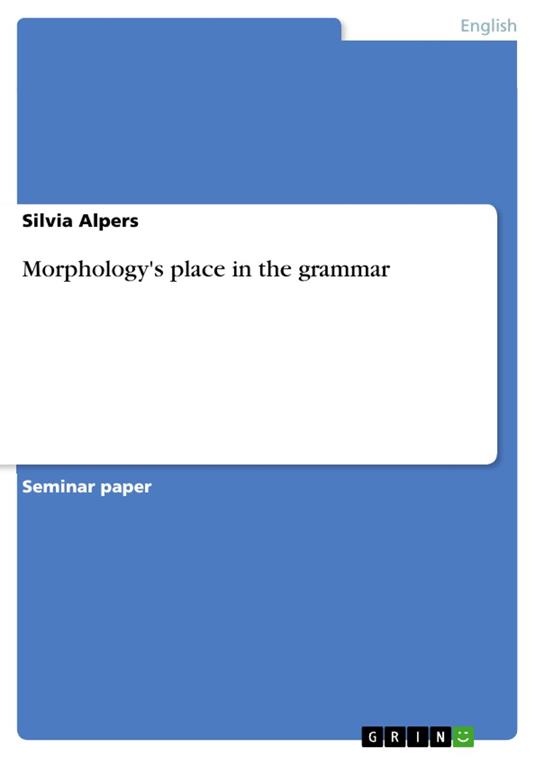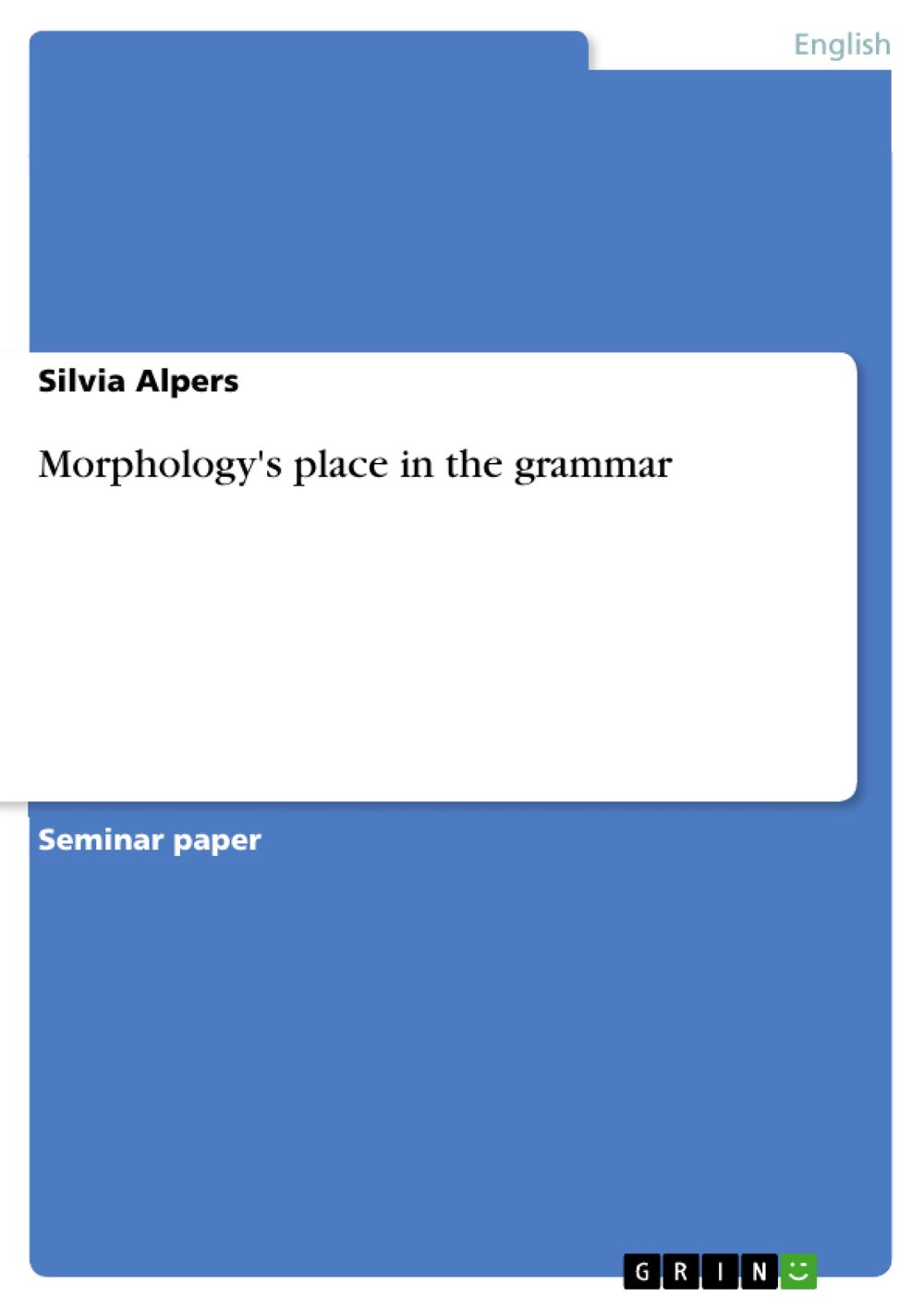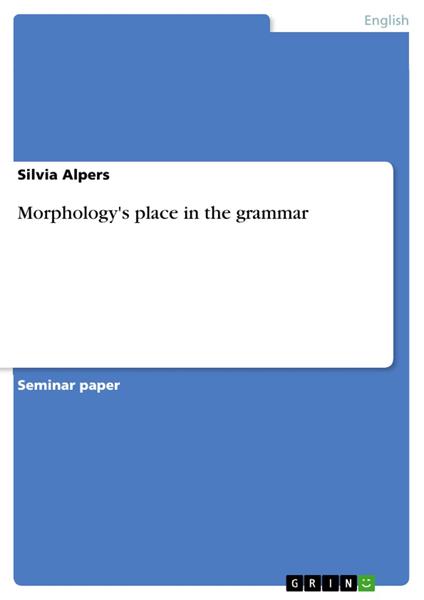Morphology's place in the grammar
Seminar paper from the year 2004 in the subject English Language and Literature Studies - Linguistics, grade: 2,5, University of Göttingen (Seminar für Englische Philologie), course: Morphology: its relation to syntax, language: English, abstract: There is much discussion in morphological theory as to where exactly morphology belongs in the mental representation of grammar. Several grammar models have been developed, each aiming at describing the key concepts of our grammar and the position of morphology in particular. Traditionally, there seems to have been a general consensus that there exists pre-syntactic (lexical) and post-syntactic components, but recently this has become an issue of debate. A key issue in this discussion is the process of word formation. While some linguists argue that word formation takes place in a separate morphological component, some say syntactic rules also play a part and some argue that words actually are formed in the syntax. Numerous linguists have contributed to this discussion, many proposing new models of morphology and word formation. In this paper, two alternate theories that attempt at describing the position of morphology in the grammar will be outlined. Chapter 2 describes Halle and Marantz’ (1993) model of Distributed Morphology, which presupposes that all word formation takes place in a syntactic module and that there is no such thing as a lexical process. Chapters 3 and 4 give an outline of an alternate view to Distributed Morphology. Chapter 3 describes Booij’s (1993) approach at proving that there are two different types of inflection, and that contrary to former theories, inflection can feed word formation. In chapter 4, Haspelmath (1995) provides much the same view as Booij by showing that inflection also can contribute to changing a word’s part of speech category.
-
Autore:
-
Anno edizione:2005
-
Editore:
-
Formato:
-
Lingua:Inglese
Formato:
Gli eBook venduti da Feltrinelli.it sono in formato ePub e possono essere protetti da Adobe DRM. In caso di download di un file protetto da DRM si otterrà un file in formato .acs, (Adobe Content Server Message), che dovrà essere aperto tramite Adobe Digital Editions e autorizzato tramite un account Adobe, prima di poter essere letto su pc o trasferito su dispositivi compatibili.
Cloud:
Gli eBook venduti da Feltrinelli.it sono sincronizzati automaticamente su tutti i client di lettura Kobo successivamente all’acquisto. Grazie al Cloud Kobo i progressi di lettura, le note, le evidenziazioni vengono salvati e sincronizzati automaticamente su tutti i dispositivi e le APP di lettura Kobo utilizzati per la lettura.
Clicca qui per sapere come scaricare gli ebook utilizzando un pc con sistema operativo Windows



